Sorting Gwangju’s Cancer Jars: Day 1
Written and photographed by Isaiah Winters.
“Another left breast. Lame. What do you have?”
“It’s … a testicular tumor! Hell yeah! Put this one on the shelf with the others.”
– Two excited urban explorers
Over a recent two-day period, a friend and I spent hours digging through flimsy boxes filled with hundreds of loosely sealed jars and prescription bottles containing human body parts. The specimens included diseased organs, tumors, and other abnormal growths that individually ought to have struck a sickening chord; however, after hours of dispassionate sorting, even a bloated mastectomy became yet another bland discovery. The countless prescription bottles filled with miscellaneous tissue were particularly tedious to sort through, with only a lone vial of rectal polyps catching my interest. Ultimately, sorting through Gwangju’s forgotten cancer jars proved to be a peculiarly mundane experience.
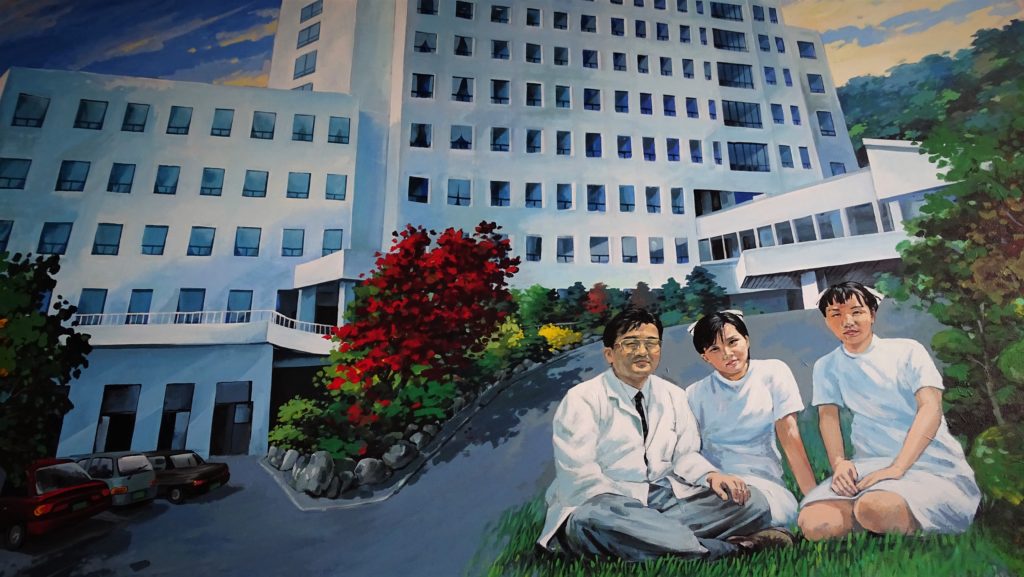
The particular hospital where we were had been abandoned for some time, and yet there was an astonishing amount of equipment and documentation remaining inside. In fact, there were so many fully equipped medical rooms to look through that the sun was close to setting by the time we’d finally found the boxes of body parts in a nondescript room. They’d been left there almost as an afterthought, like Christmas decorations in June. Whoever put them there had far more concern for the costly medical equipment in the room, which they’d covered with shower towels to keep the dust off; meanwhile, the boxes sat wide open. Given the hospital’s mismanagement and eventual closure, this gross display of negligence wasn’t surprising.
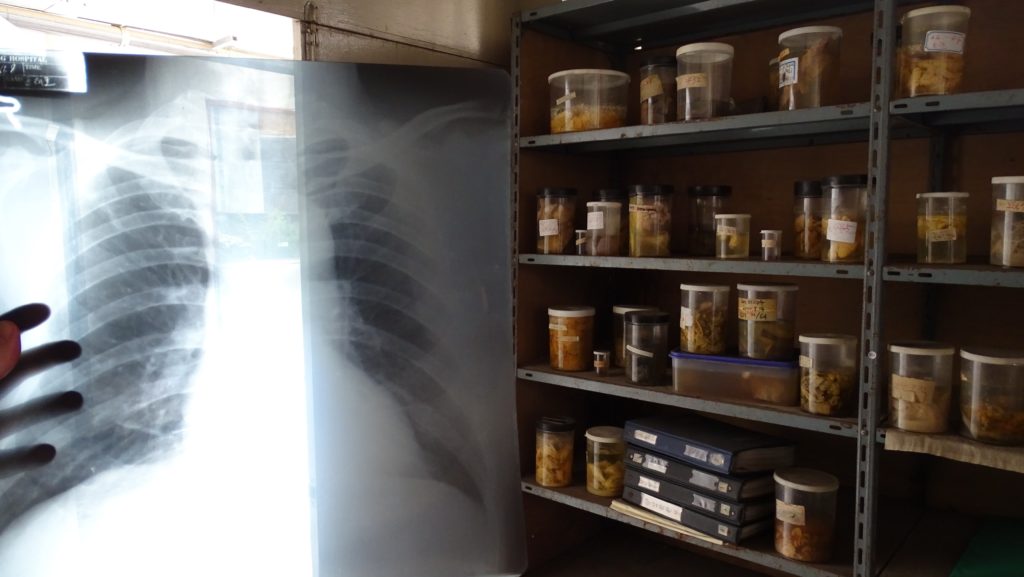
Lacking gloves, we did our morbid work as delicately as possible. There were, of course, a few minor leaks and spills due to the jars’ fragile seals, which caused the room to stink like a high school dissection lab. Our aim in all this was to find the most freakish specimens and set them aside for later photography. A stomach, colon, and uterine myoma soon found themselves on the shelf next to an abdominal mass and a jar drably labeled “bowels.” Another box yielded a dark, egg-like ovarian cyst and a pancreatic mass that looked like an undercooked pork cutlet. Aside from these, the larger jars mostly contained mastectomies distinguished as either “right breast” or “left breast” along with the patients’ names. The piece de resistance was the massive right testis tumor of some poor bloke. We managed to take a few photos of these gems on day one, but with sunlight waning, we decided to pack things back in and return early the next day – with gloves.
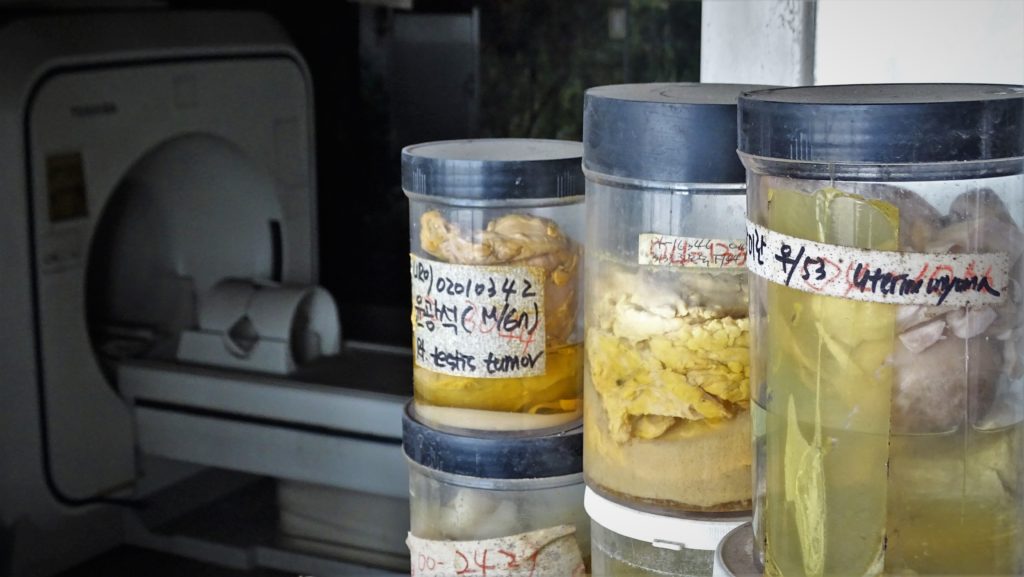
Believe it or not, this discovery actually wasn’t the first of its kind in Korea. A collection of abandoned animal specimens up in Seoul was the first, though sadly it was destroyed last year. Dubbed “The Nightmare Lab” by members of our urban exploring community, it contained mostly animal specimens, including starfish, frogs, and even a cat’s nervous system. (See the November 2018 issue of the Gwangju News for the full scoop.) I never got to see “The Nightmare Lab” myself, but from the pictures I did see, it was far more photogenic than what I’ve dubbed “The Cancer Lab” featured in this article. Frankly speaking, the Gwangju specimens are downright disgusting – both aesthetically and in terms of the circumstance in which they were abandoned. Nevertheless, given the larger context, “The Cancer Lab” is ultimately a timely successor to “The Nightmare Lab” with a uniquely human touch.
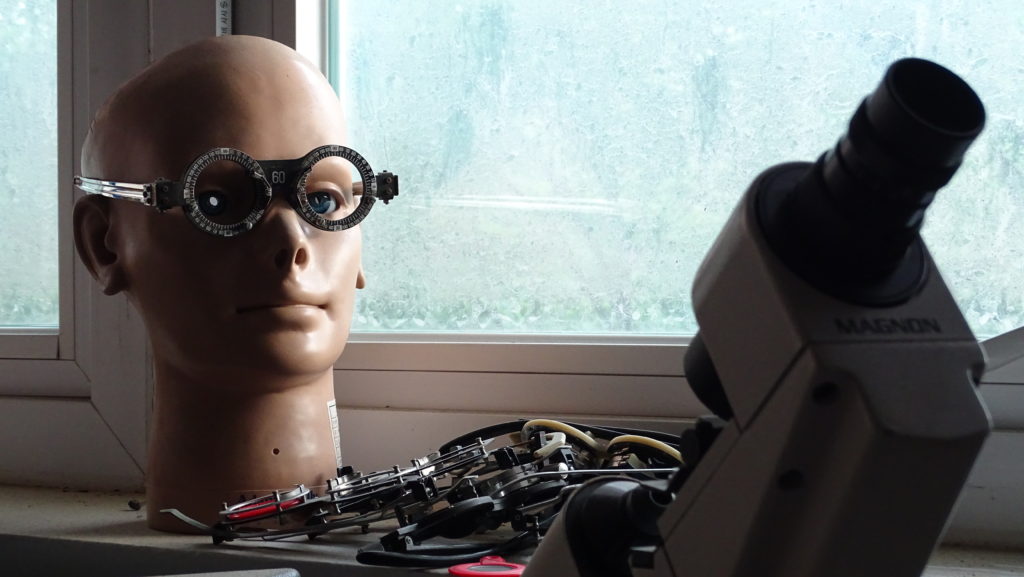
Day one at this hospital yielded another unique discovery that made us eager to return. Early on in the day, we came across an unlocked room containing lots of military-style medical equipment, including a half dozen blood-spattered field gurneys and stacks of wooden emergency medical kits from the Ministry of Health and Social Affairs. Most of the larger kits had been emptied of their contents, but at least one still had packages of gauze, a gasmask, and a portable emergency kit with chemical and antimicrobial agents inside. Among the gear were also a khaki jacket and hat worn by members of the country’s Civil Defense Force, which provided a major clue as to who might have used all this surplus military gear; however, exactly why it all ended up at this particular hospital is still somewhat of a mystery.
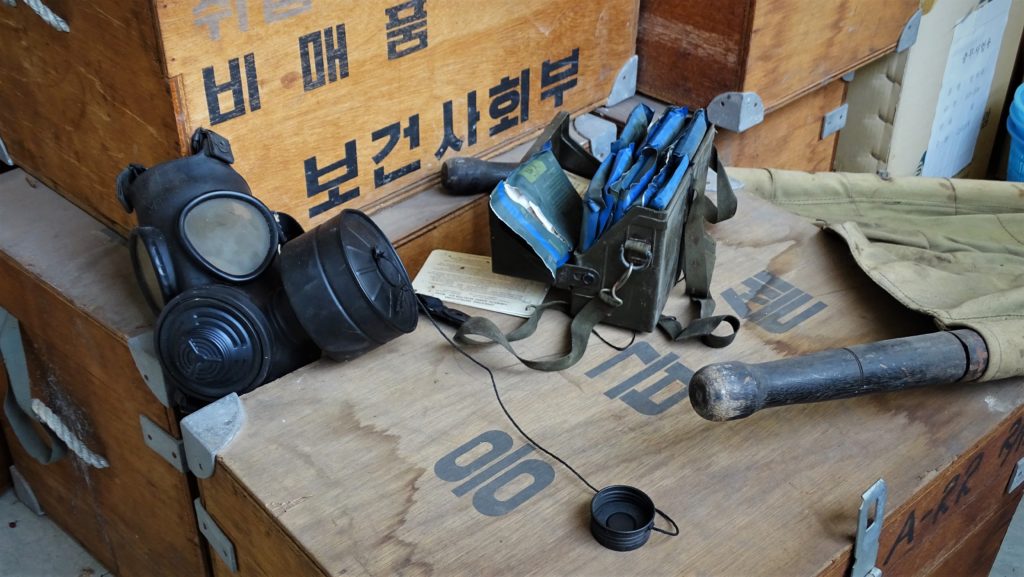
With roughly half of its doors still firmly locked, there’s a lot that’s yet to be unveiled at this hospital. For example, we suspect there’s a morgue on the premises, though we haven’t accessed enough rooms to know for certain. Given that the hospital has been extensively vandalized over the last few years, there’s a strong feeling of impermanence surrounding its most sensitive contents. While the animal specimens in Seoul’s “Nightmare Lab” stood for over half a century, something tells me the human specimens of Gwangju’s “Cancer Lab” won’t enjoy the same longevity, despite some samples already being over two decades old. That’s why we found it important to visit the site again the very next day, which resulted in another set of bizarre discoveries that will be featured in next month’s edition of Lost in Gwangju.
The Author
Originally from Southern California, Isaiah is a Gwangju-based urban explorer who enjoys writing about the City of Light’s lesser-known quarters. When he’s not roaming the streets and writing about his experiences, he’s usually working or fulfilling his duties as the Gwangju News’ heavily caffeinated chief proofreader.






What a great exploration of the hospital building, which most residents of Gwangju are not aware of its existence itself.